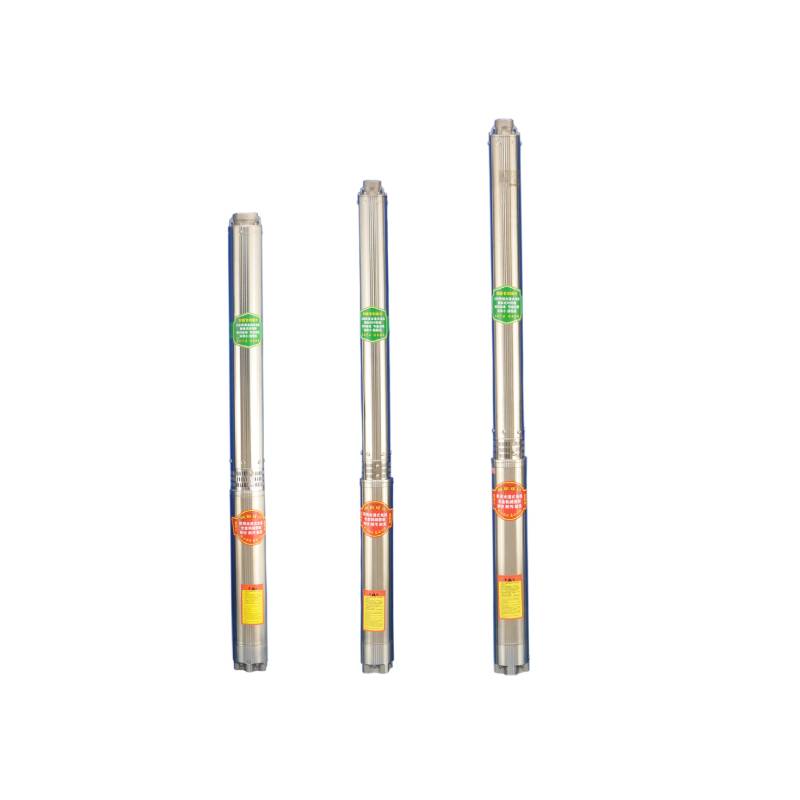Jul . 26, 2024 15:43 Back to list
Guidelines for Proper Installation of Deep Well Pumps for Optimal Water Extraction Efficiency
Deep Well Pump Installation A Comprehensive Guide
Deep well pumps are essential for extracting water from deep underground aquifers, ensuring a steady supply for agricultural, residential, and industrial use. Proper installation of these pumps is crucial for efficient operation and longevity. This article provides a detailed overview of the deep well pump installation process, ensuring that you understand the key steps and considerations involved.
Understanding the Components
Before diving into the installation process, it's important to familiarize yourself with the main components of a deep well pump system. The primary parts include the pump itself, a motor, a control panel, piping, and a discharge head. The pump system is typically submerged in a well casing, which protects the pump and allows water to flow efficiently.
Pre-Installation Considerations
1. Site Assessment Before installation, conduct a thorough assessment of the site. This involves analyzing the well’s depth, the quality of water, and the estimated water demand. Additionally, ensure that local codes and regulations regarding well construction and pump installation are followed.
2. Selecting the Right Pump Choose a pump that matches the specific needs of your application. Factors to consider include the well’s depth, the required flow rate, and the desired pressure. Consult with a professional if unsure, as various pump types serve different purposes.
Installation Steps
1. Preparing the Site Ensure the site is accessible and clear of debris. If necessary, create a stable platform for the pump installation to prevent any movement during operation.
deep well pump installation

2. Lowering the Pump A deep well pump is usually installed using a cable or rope. Carefully lower the pump into the well casing while ensuring it remains upright. It's crucial to go slowly and avoid damaging the pump or the well structure.
3. Connecting the Motor Once the pump is at the desired depth, connect the motor to the pump. This step is vital because the motor drives the pump. Ensure that all connections are secure and that the motor is positioned correctly to prevent any strain on the assembly.
4. Installing the Discharge Head The discharge head serves as the point where water exits the well. It is usually installed at the top of the well casing and is vital for preventing contaminants from entering the water supply. Secure it firmly and ensure all seals are tight to avoid leaks.
5. Piping and Electrical Connections Install the necessary piping that connects the pump to the storage tank or water system. This step may also involve electrical connections for the motor. Consult with a licensed electrician to ensure that all electrical work adheres to local safety regulations.
6. Testing the System Once everything is connected, it's time to test the system. Turn on the motor and check for any leaks or unusual noises. Monitor the flow rate and pressure to ensure the pump is functioning as intended.
Maintenance and Troubleshooting
After installation, regular maintenance is essential to ensure the longevity of your deep well pump. This includes routine inspections, cleaning, and replacing any worn components. Be alert for signs of trouble, such as decreased water flow or unusual sounds, as these could indicate a problem that needs urgent attention.
In summary, installing a deep well pump requires careful planning and execution. By following the outlined steps and ensuring proper maintenance, you can ensure a reliable and efficient water supply for your needs. Always consult professionals when necessary, and prioritize safety throughout the installation process.
-
Submersible Water Pump: The Efficient 'Power Pioneer' of the Underwater World
NewsJul.01,2025
-
Submersible Pond Pump: The Hidden Guardian of Water Landscape Ecology
NewsJul.01,2025
-
Stainless Well Pump: A Reliable and Durable Pumping Main Force
NewsJul.01,2025
-
Stainless Steel Submersible Pump: An Efficient and Versatile Tool for Underwater Operations
NewsJul.01,2025
-
Deep Well Submersible Pump: An Efficient 'Sucker' of Groundwater Sources
NewsJul.01,2025
-
Deep Water Well Pump: An Efficient 'Sucker' of Groundwater Sources
NewsJul.01,2025
-
 Submersible Water Pump: The Efficient 'Power Pioneer' of the Underwater WorldIn the field of hydraulic equipment, the Submersible Water Pump has become the core equipment for underwater operations and water resource transportation due to its unique design and excellent performance.Detail
Submersible Water Pump: The Efficient 'Power Pioneer' of the Underwater WorldIn the field of hydraulic equipment, the Submersible Water Pump has become the core equipment for underwater operations and water resource transportation due to its unique design and excellent performance.Detail -
 Submersible Pond Pump: The Hidden Guardian of Water Landscape EcologyIn courtyard landscapes, ecological ponds, and even small-scale water conservancy projects, there is a silent yet indispensable equipment - the Submersible Pond Pump.Detail
Submersible Pond Pump: The Hidden Guardian of Water Landscape EcologyIn courtyard landscapes, ecological ponds, and even small-scale water conservancy projects, there is a silent yet indispensable equipment - the Submersible Pond Pump.Detail -
 Stainless Well Pump: A Reliable and Durable Pumping Main ForceIn the field of water resource transportation, Stainless Well Pump has become the core equipment for various pumping scenarios with its excellent performance and reliable quality.Detail
Stainless Well Pump: A Reliable and Durable Pumping Main ForceIn the field of water resource transportation, Stainless Well Pump has become the core equipment for various pumping scenarios with its excellent performance and reliable quality.Detail
